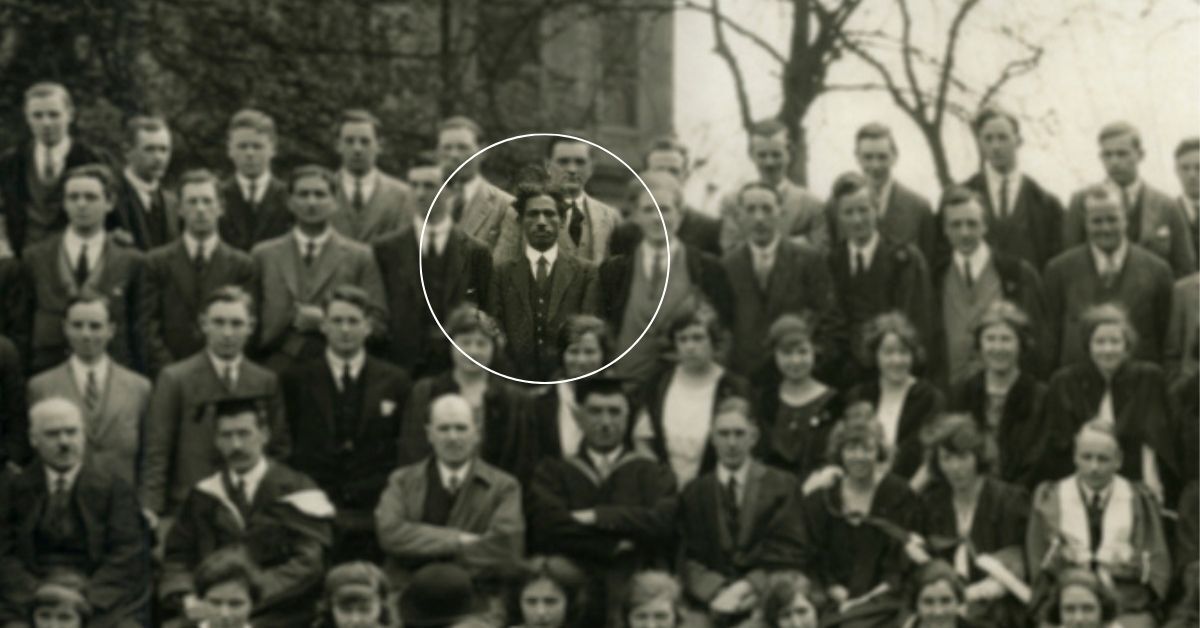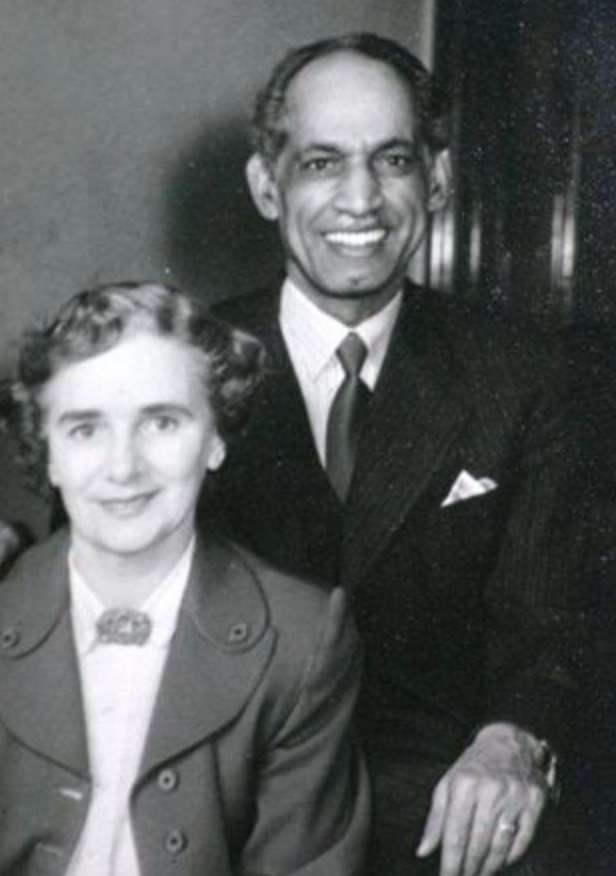Why A Coastal Scottish Town Remembers This Unknown Indian Even 100 Years Later
Dr Jainti Dass Saggar from Ludhiana, Punjab was elected as the first south Asian and non-white town councillor of Dundee, Scotland, and became a permanent part of the region's history.

In 2019, the University of Dundee, one of the UK’s top 30 educational institutions, announced the Jainti Dass Memorial Scholarship for Excellence for Indian students looking to study there. The winner would receive £5,000 in addition to the already-existing Global Excellence Scholarship of the same amount, taking the total sum of the scholarship to £10,000.
This scholarship was named after an Indian man who was the first South Asian town councillor of Scotland and arguably one of the first Indians to settle in the region. Aside from this scholarship, the town of Dundee remembers him and his contributions even 100 years after his demise, with a street and a library named after him as well. Much of Dundee’s development and transformation can be credited to this doctor.
A 26-day voyage
Dr Jainti Dass Saggar was born in the village of Deharru in Ludhiana, Punjab, in 1898 during the British era. He was the second-born among six siblings, and did much of his schooling in Deharru before moving to Lahore to finish his education.
In her book, ‘Dr Jainti Dass Saggar: From Deharru to Dundee’ (2015), Jainti’s daughter Kamala writes, “During his time [studying] at Lahore Medical School, the region [undivided Punjab] was consumed by strife, violence and martial law. The shocking Jallianwala Bagh Massacre of April 1919 occurred in Amritsar, less than 30 miles from where Jainti was living and studying.”
At this time, one of Jainti’s tutors, who was a Scot, recognised this med student’s talents and proposed his transfer to a Scottish university. But Kamala says that it was a larger realisation on Jainti’s part that the unrest in the state as well as the rest of the country placed him in a vulnerable position and could potentially inhibit him from realising his dream.
And so in 1919, the young man who had never travelled out of Punjab undertook a 26-day journey via sea to finally arrive at Gravesend in England. He boarded a train to London’s King’s Cross, and finally arrived at Dundee, a place he would soon come to call home.
Here he was enrolled in University College Dundee, the forerunner to University of Dundee, and completed his medical degree in 1923. He soon set up a small medical practice, where he was introduced to the Quinns, a prominent family in the town with an active involvement in politics. He met the family’s daughter Jean, and the two fell in love and eventually wed in 1931.

Through his wife’s family, Jainti was introduced to the world of politics. In 1936, he was nominated to the Dundee Council by the Trade and General Workers’ Union. The ward that he was contesting in, Ward VIII, ended up having the highest voter turnout, and he was elected as a local Councillor, the first South Asian to attain this feat in Scotland.
‘Equality, not privilege’
During his tenure as town councillor and as part of the Labour party, Jainti worked on a number of issues. These included meals-on-wheels, free education, opening of schools, public health, advocacy of mental health, evacuation planning, child welfare, and more. He was a fierce proponent of trade unions. He was also an advocate for the National Health Service, and a firm believer that healthcare was the state’s responsibility. He campaigned for shorter work weeks for nurses, and through his efforts, the NHS introduced healthcare policies to cover the rural population of the town. His motto was, “Equality, not privilege; needs, not status”.
Simultaneously, he advocated to lower the pass rate for entry into educational institutions. While he campaigned for the rate to be 50%, it was finally approved at 60%, allowing more equitable access into secondary education. He introduced the ‘Penny Fare’, which lowered the rates of Dundee’s Transport Corporation vehicles. He fought for the reopening of galleries and museums on Sundays, so that the working class, which would usually have offs on the day, could visit these institutions as well.
In 1954, Jainti’s wife Jean was elected to the town council as well, and the two became Dundee’s first husband-wife team on the council. Together they campaigned for cleaner air and food, and Jean was later awarded an OBE for her services.
In the late 1930s, Jainti became involved in the debate about cheap jute imports from India, which were undercutting the profits of Glasgow manufacturers and the wages of local workers in the area. He joined a delegation of trade unionists and manufacturers that travelled to London to ask the British government to protect the country’s jute industry. “As long as cheap labour in India, working under both British and Indian capital, [goes] on increasing, over production of cheap commodities would have a detrimental effect on Dundee,” he said.
This matter was part of a larger debate at the time, in which British manufacturers and workers believed that their own profits and wages were being sidelined to keep British colonies happy. Saggar called for higher wages of Indian workers, which would make their output more expensive and in turn less of a threat to Glasgow workers.
Today we launched the new Jainti Dass Saggar Memorial Scholarship, commemorating the incredible impact 1923 graduate Dr Saggar had on the city he came to 100 years ago.
His family were welcomed by staff and students to celebrate his enduring legacy.https://t.co/7q4FzBBllQ pic.twitter.com/YvagcBeeaR
— University of Dundee (@dundeeuni) December 6, 2019
Moreover, Jainti was instrumental in the appointment of V K Krishna Menon as a parliamentary candidate for Dundee in 1939. Alongside the transformation of this Scottish town, he never left his Indian roots behind. He was an active member of the Dundee chapter of Friends of India, where he campaigned for India’s independence and was a firm believer in Gandhian ideologies of non-violence. Not all his policies were met with fervour, and he ran into several roadblocks, many owing to his nationality. Regardless, he persevered, and was one of the longest-serving council members of Dundee, with a tenure of 18 years.
Jainti suffered an untimely death due to an intracerebral hemorrhage in 1954, when he was 56 years old. This was both sudden and shocking for all of Dundee, which had come to deeply love Scotland’s first non-white local authority. Dundee’s Lord Provost, Scottish equivalent to the position of Mayor, William Hughes noted, “He was a man of compassion for everyone in need…he came to Dundee from halfway across the world but no son of Dundee had greater love for its people or worked harder in their interest. Dundee is much poorer by his passing.”
Exactly 100 years to his arrival in Scotland, Wendy Alexander, Vice Principal (international) of Dundee University, noted, “Dr Saggar was a truly inspirational character who worked to improve the quality of school meals well ahead of his time. He also helped open a psychiatric clinic for early mental health treatment and argued for the provision of 20 communal canteens for Dundee’s poor. He was a true example of a global citizen, who chose to study, live and improve the city he came to. With this new scholarship, we hope his story inspires the next generation of Dundee students.”
Edited by Yoshita Rao
If you found our stories insightful, informative, or even just enjoyable, we invite you to consider making a voluntary payment to support the work we do at The Better India. Your contribution helps us continue producing quality content that educates, inspires, and drives positive change.
Choose one of the payment options below for your contribution-
By paying for the stories you value, you directly contribute to sustaining our efforts focused on making a difference in the world. Together, let’s ensure that impactful stories continue to be told and shared, enriching lives and communities alike.
Thank you for your support. Here are some frequently asked questions you might find helpful to know why you are contributing?


This story made me
-
97
-
121
-
89
-
167











